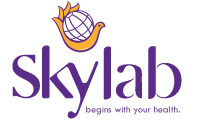No products in the cart.: ₹0.00
Hemorrhagic strokes rupture the blood supply to the brain, while an ischemic stroke stops it. Either way, there is a chance that certain brain regions will either die or sustain damage, leading to permanent impairments or even death. Here are some additional details about brain strokes, including their causes, treatment methods, and early warning signs to be aware of.
What is a brain stroke?
The brain is the primary organ involved in movement control, memory storage, and the generation of thoughts and emotions. Additionally, it aids in the regulation of all vital bodily processes, including breathing and digestion. The arteries support the brain by carrying oxygen to every area of the body, which the brain needs for healthy function. A brain stroke could occur from a blood clot obstructing the blood supply to the brain or from the rupture of a blood vessel that supplies oxygen to the brain. Because the brain isn’t getting enough oxygen, brain cells in both types of strokes—ischemic and hemorrhagic—start to die within minutes.
It’s imperative to take immediate action if someone exhibits symptoms of a brain stroke.
Signs of Cerebral Ischemia
To be able to recognize the warning signs of a brain stroke promptly, it is imperative that everyone be aware of the symptoms of a brain stroke. People have been using the abbreviation F.A.S.T. for years to teach them how to recognize the symptoms of a brain solver time, estimates suggested that up to 14% of stroke cases might remain unreported, solely based on the symptoms included in F.A.S.T. orated. At that point, two new variations, F.A.S.T.E.R. and B.E. F.A.S.T.E.R., emerged.
FA.S.T.
F stands for face. A sudden, usually limited to one side of the body, numbness or weakness in the face causes it to droop.
A stands for arms. Another symptom is sudden weakness or numbness in the arms. Even when asked, a person might not be able to raise one or both arms.
S stands for speech. The individual may experience speech loss or have trouble speaking or understanding others.
T stands for time, emphasizing how urgent it is to take immediate action if someone exhibits symptoms of a brain stroke.
F.A.S.T. B.E.
B is for balance: abrupt problems with equilibrium and hand-eye coordination.
E stands for Eyes. Other symptoms to watch out for include sudden blurriness of vision, double vision, or loss of eyesight in one or both eyes.
The F.A.S.T. does not change from before.
FA.S.T.E.R.
In this case, F and A stay the same, S stands for stability (also for balance), T for talking (also for speaking), E for eyes, and R for “react,” which also serves as a reminder to act fast and seek medical treatment.
Other signs of a stroke include abrupt confusion, an intense headache, and numbness in one or both limbs or faces, especially on one side of the body.
Different types of brain strokes
In the brain, there are three main forms of stroke, each with a possible underlying cause.
Temporary Ischemic Attack
A ministroke is another name for a transient ischemic attack, or TIA for short. This happens when there is a brief blockage in the blood supply to the brain, typically lasting less than five minutes. On its own, this kind of stroke reverses.
Concussion
The most prevalent kind of stroke in the brain is an ischemic stroke. It happens when plaque accumulation or blood clots obstruct the blood vessels that supply the brain. The symptoms of this kind of stroke are typically more severe than those of a transient ischemic attack, sometimes even becoming permanent.
hemorrhagic stroke
When there is excessive pressure on the brain cells, an artery in the brain bursts or begins to bleed blood, resulting in a hemorrhagic stroke. Primary causes of hemorrhagic strokes include high blood pressure, excessive use of blood thinners, bulging or weak areas in blood vessels, and head trauma.
Lack of oxygen to brain cells occurs in all three types of strokes, and this can eventually cause brain damage or even death. The sooner someone receives treatment for a brain stroke, regardless of the type of stroke, the better their prognosis.
Brain stroke diagnosis
The most common methods for diagnosing brain strokes are physical examinations and brain scans obtained from imaging tests. A medical professional will inquire about the symptoms and whether there is a family history of brain strokes. The etiology of a brain stroke might vary from case to case, so the physician will review the patient’s medical history to identify risk factors, such as blood pressure, pulse rate, and medications taken. The medical practitioner will assess the patient for balance and coordination, weakness, numbness in the arms, face, or legs, symptoms of confusion, and any visual problems before making a treatment plan recommendation.
Depending on how severe the patient’s symptoms are, a doctor may recommend a number of tests to identify the underlying cause of the stroke. The examinations could consist of:
Blood Examinations
We perform blood tests to measure blood sugar, cholesterol, platelet count, blood clot intensity, and infection status.
CT and MRI scans
Depending on the severity of the problem, a physician may recommend an MRI, CT scan, or both. An MRI can detect the destruction of brain tissues or cells, while a CT scan can provide a clear picture of the brain to guide a treatment plan.
ECG
The electrocardiogram, or EKG, is a vital test that captures the electrical activity of the heart. It captures the heart’s pulse frequency and rhythm.
Brain Angiography
A cerebral angiography provides a thorough examination of the arteries in the brain and neck. The test can assist in identifying any artery blockages or clots.
Carotid Ultrasonography
Doctors can identify fatty deposits in the carotid arteries—which feed blood to the brain, neck, and face—by using ultrasound technology. Additionally, the test indicates whether the carotid arteries are restricted or obstructed, which would prevent blood that is rich in oxygen from reaching the brain.
Echocardiography
The test helps identify the origin of any blood clots in the heart that may have made their way to the brain and resulted in a stroke.
Therapy for Cerebral Ischemia
Depending on whether a patient is suffering from an ischemic or hemorrhagic stroke, different treatment plans are recommended. The following describes the course of treatment for both kinds of brain strokes:
Concussion
Doctors prioritize restoring blood circulation to the affected parts of the brain in order to aid in recovery from an ischemic brain stroke. They accomplish this by writing prescriptions for thrombolytics, a class of drugs. Catheterization is a procedure that is occasionally part of the treatment approach for ischemic stroke.
hemorrhagic stroke
The degree and location of the bleeding in the brain determine the course of treatment for hemorrhagic stroke. In these situations, doctors give priority to lowering blood pressure because it eventually contributes to lowering blood flow. Another therapeutic option to relieve pressure on the brain due to blood accumulation is to remove the blood clot through surgery or medication.
In summary, a stroke is extremely time-sensitive, and postponing receiving the appropriate care can have major consequences for the brain. It is wise to become knowledgeable about brain strokes, practice B.E.F.A.S.T. (also known as FAST EER), and seek emergency medical assistance if stroke symptoms appear. Rapid medical care increases the likelihood of lessening or even reversing the effects of a brain stroke.
symptoms of a brain stroke. | Blood test laboratory | Medical care lab near me | Platelet count test | Home collection laboratory near me | Doctor at service | Home Nursing service | Medical laboratory Pattom | home collection near pattom | Best labratory near Vazhuthacaud | Medical care | Online laboratory test booking | lab on click | care at home lab | Laboratory near Kumarapuram | Home collection laboratory near Palayam | Home Sample collection Vettucaud | laboratory near Medifort




